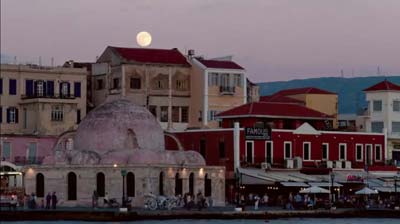What is the Acropolis for the classical era and Mount Athos for the Byzantine, is for the prehistory Akrotiri in Santorini, part of the teaching in all the universities of the world. If there was no volcano, there would be no Cape. Volcanic ash “saved” the remains of the prehistoric city over the centuries. The eruption was the largest on the planet in the last 10,000 years, 5 times larger than the eruption of Vesuvius that destroyed Pompeii!
February 1961, Mr. Christos Doumas, 28 years old, newly appointed curator of antiquities of Cyclades comes to the island “the guardian of the museum tells me:” If you are lucky, we may have an explosion to admire it. It is a wonderful spectacle “… ..From During the excavation we had to call an eldest daughter, Mrs. Kalliopi, the only one who had a telephone. She would connect us with Pyrgos Village, from there to Fira and from there to Athens, the whole process took about an hour. In Fira, there were then about fifteen carpenters. But not even 400 people live here, I thought. Why are so many needed? I soon learned that they were making barrels for the wine that was exported mainly to Odessa…. Oia village, almost ruined, in Fira there was only the tavern of Nikolas, one of the poorest islands I had ever seen, the villagers bent down and kissed the hand of their boss! Now, thanks to the easy money of tourism, they have all become bosses themselves!
“None of the buildings was found without at least one room decorated with murals, the city had been turned into a huge workshop where patrons and artists were competing to better highlight their social status, their artistic talent and the expensive Their habits with the frescoes and the furniture that were found intact (photo 1,2,3) testify to their financial strength, even imported snails were found from Crete and many fig seeds that were their sugar…
Inside the covered space we have located about 35 buildings. Of these, only 4 have been excavated and we have extracted 14,000 whole potery artifacts! In a single house about 2,000 ceramic glasses came to light, in a single store 700 vessels were found, the abundance of vessels shows a society that knew how to enjoy the joys of life… »
The rarest delicacy was an exquisite sauce praised by Sophocles, Plato and Pliny, the garos, from fish offal and small fish (sardines, atherines) that were pickled in coarse salt and spread in the sun for 2-3 months. The thick liquid they got from the strain was diluted with olive oil, wine or vinegar and stored for sauce, the recipe gave the idea for Sicilian anchovy sauce and Worcestershire sauce.
On the island, Mr. Doumas began his marital career with Alexandra, a British woman, they married in 1970 and had three children: Electra, Hecabe and Priam. “We have the Trojan War in our house.”
“I feel Akrotirian! If at least a month passes and I do not go to the excavation, I get deprivation syndrome … “. Once, an elementary school student asked me what I gained while working in Santorini all these years, I replied … “the wealth I gained here is untold and in fact of this type that I am not afraid of losing it or being stolen”
“I once had a conversation with the eminent Turkish archaeologist Ekrem Akurgal. And I told him that we have borrowed a lot from Turkish cuisine, citing meatballs as an example. And he says to me: “You are naive. The Turks were nomads when they came here. They did not have a kitchen. They just adopted the Byzantine one. The word “meatballs” is not Turkish, it is the Byzantine “cut meat…”. And indeed, I still remember my mom and grandma cutting the meat quickly and crosswise with two sharp knives making the minced meat! »….
The souvlaki originates from the Aegean. They were baked in the holders, from the “state” which means strong, powerful and metaphorically resistant to fire. They had notches but also holes to circulate the air and not to extinguish the coals while ensuring a healthy cooking, since the fat was falling. At the end they had the shape of a ram’s head (photo 4). The wooden straws were called spears. This is how the name skewers for skewered animals came about (in the comments, a modern representation kept!)
Bake, order skewers today, honoring a tradition of 3,600 years!

















































